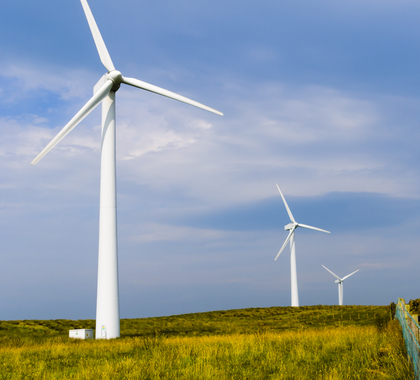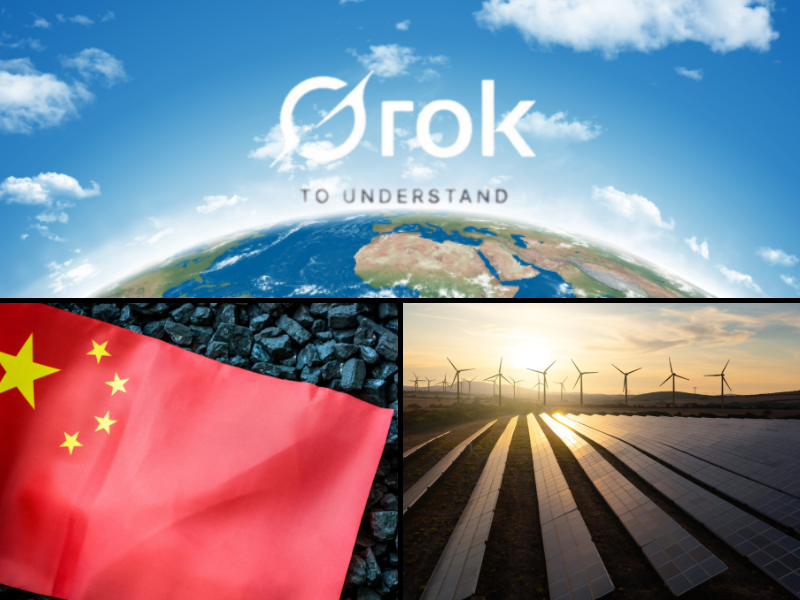If we switched all our electric generation to wind energy, how much brighter would our future be?
We have been warned about the effects of climate change for years, and a fairly strong majority of Americans believe there is cause for concern. The most extreme alarmists think we might need to colonize other planets, because soon the Earth will be unable to sustain life. Others fear that rising sea levels will wipe out coastal cities like Miami and New Orleans.
It is difficult to convince people who live inland at higher altitudes that a few inches of higher sea levels would change their lives, but the weather affects us all. Recent reports claim the frequency and severity of storms is getting worse, almost everywhere. Al Gore and his allies insist that climate change is bringing more hurricanes, tornadoes, monsoons, tidal waves, earthquakes, and Tsunamis.
Historical data does not necessarily show that, mind you, but round-the-clock cable news coverage certainly makes these natural disasters more visible than they once were. The 1938 hurricane that killed 682 people and destroyed 57,000 homes in New York and Connecticut, for example, was hardly noticed anywhere else. There were no TV cameras.
Whether these phenomena are getting worse or not, though, they are always tragic, and they have unquestionably helped convince Americans that climate change is happening. That’s why we have invested over $40 billion annually in renewable energy for the past few years. Bloomberg estimates that by 2030, America’s investment in renewable energy might top $1 trillion, much of it in wind farms. But what if the wind stops blowing?
I can take rain, snow, and sleet, but I have always disliked the wind. If it quit blowing forever, I would be happy (I don’t own wind farms). Now it turns out that wind is, in fact, one weather factor that is not getting worse. A new study suggests, instead, that “wind resources” are declining significantly worldwide. The study was conducted by researchers from the highly respected Chinese Academy of Sciences and from Purdue University, who analyzed decades of data from more than 1,000 weather stations around the world. What they found is astonishing. Namely, two-thirds of those locations have recorded large decreases in wind speed over the past 40-years.
“The results show that surface wind speeds were decreasing in the past four decades over most regions in the Northern Hemisphere,” the study says. Roughly 30 percent of the locations in North America saw at least a 30 percent decline in “available hub-height wind power.” Sites in Europe fared even worse, with about 40 percent experiencing similar declines in the wind, and worst of all were the sites in Asia, where nearly 80 percent of sites on the continent saw a 30 percent drop in wind resources.
Researchers use terms like “wind power” and “wind power resources” and “hub height wind power” interchangeably — they mean “wind.” Scientists are like lawyers — they never use one word when five will do just as well. Maybe they don’t really want ordinary people reading their reports and jumping to conclusions, but this one is staggering in its implications for public policy. Virtually all of the developed countries and industrialized nations of the world are investing heavily in wind power, as an alternative to fossil fuels. So if the wind stops blowing, to a large enough extent to diminish the value of wind farms, those massive investments could be wasted, failing to produce either the electricity or the environmental improvement planned.
Predictably, some are already blaming mankind for the diminished wind. One of the study’s authors says he suspects the cause is the growth of cities, though he does not explain how that would affect worldwide wind. Another suggestion is that carbon dioxide emissions must be the cause, though that is also left unexplained. No doubt, another study will soon follow, blaming our dependence on oil, gas, and coal. In some places, wind machines themselves are known to reduce the wind, at least locally. We know that wind turbines generate less electricity if they are downwind from other turbines. They call that the “wake effect,” but it cannot explain such major global wind decreases over the past 40 years.
Is it wise to continue investing billions in a resource that may not be as predictable as we thought? Or to badly paraphrase Bob Dylan, how many tax dollars must we spend on the wind, before we’re allowed to be free? The answer, my friend, is blowin’ in the wind. Or is it?
[Originally Published at the Daily Sentinel]





